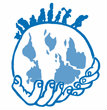In 2005, developing countries, especially desperate South-East Asian countries hardest hit by the H5N1 outbreaks, failed to get access to vaccines developed using flu virus strains circulating in affected countries, shared through the network of laboratories known at that time as “Global Influenza Surveillance Network” (GISN).
Manufacturers prioritized supplies to rich countries that had provided financial grants for production and signed advance purchase agreements to be at the front of the supply queue during an influenza outbreak. Moreover, WHO-designated laboratories, e.g. the US Centres for Disease Control (CDC), a WHO Collaborating Centre and pharmaceutical companies with whom biological samples and sequence information were shared in good faith, also claimed patents over parts of materials shared (e.g. genes/sequences) and their use in the development of diagnostics, therapeutics and vaccines. The GISN system lacked a regulatory framework governing the sharing of influenza viruses of pandemic potential (IVPP) and, with that, a system for transparency, accountability and equity.
These issues came to a head at the 60th World Health Assembly (WHA) in 2007 when more than 20 developing countries brought this issue to the WHA, seeking a better equitable system.
